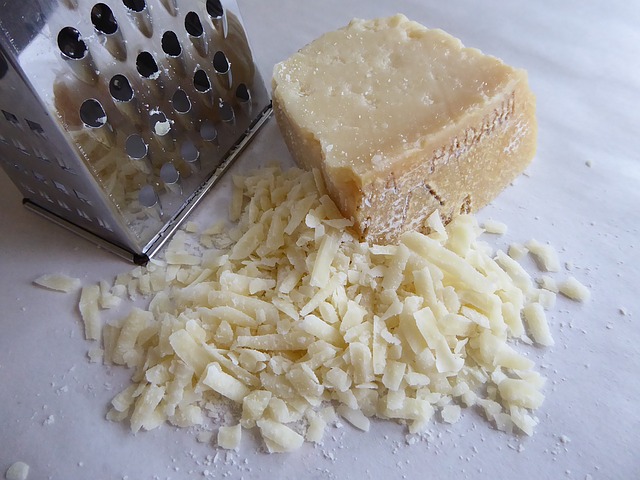
Say it isn’t so. A report from Bloomberg Businessweek is claiming that there might be some wood in a lot of the parmesan cheese out there. The wood additive is actually called cellulose, and it is considered a safe thing to put in there to prevent the cheese from clumping. Some parmesan cheeses however have been found to be 8 percent cellulose.
One company that had a particularly high amount of cellulose in it was the Pennsylvania based company Castle Cheese Inc, which advertised “100 percent parmesan cheese” but actually did not contain any parmesan cheese at all. Their version of parmesan cheese was actually made up of Swiss, mozzarella, white cheddar, and plenty of cellulose. The FDA busted those guys however and the president of the company Michelle Myrter will plead guilty to the criminal charges against her this month. She could end up in prison for a year and owing $100,000 in fines.
Cellulose isn’t anything to worry about in the proper amounts however, and most of us aren’t downing parmesan cheese by the bucketfull anyway, so the amount we’re ingesting would be pretty negligible. But to be safe there should only be 2 to 4 percent of the stuff in parmesan cheese for it to be an acceptable amount.
The Castle Cheese company wasn’t the only one that was found to have too much cellulose, although there case really took the cake.
Wal-Mart Stores Inc.’s Great Value parmesan cheese was found to have 7.8 percent cellulose in their 100% Grated Parmesan Cheese, while the Essential Everyday 100% Grated Parmesan Cheese from Jewel-Osco was found to contain 8.8 percent. Kraft had an almost acceptable 3.8 percent, and even Whole Foods 365 brand had .3 percent even though it wasn’t listed on the label.
Blaire Kniffin, a Whole Foods Market Inc. spokeswoman, responded to the test results:
“We strongly believe that there is no cellulose present. But we are investigating this matter.”
As to why companies that make cheese might be stuffing their products with fillers, that would simply be because it saves them money. The companies of course who can get away with selling their product for less always have the opportunity to sell a lot more of it, but there are standards that were put in place in the 1950’s about what can be called Parmesan or Romano, or the FDA tries to stay on top of it as much as possible.
The Italian cheeses are the most likely to be cheapened with fillers since they take longer to make than other cheeses, and are therefore more expensive to produce. The process of letting the parmesan wheel sit dries it out so there is actually less product in the end process than when compared to a cheese like cheddar that does not require the lengthy dry out.
Americans are actually eating more parmesan cheese than ever, with sales rising 11 percent to 336 million pounds of the stuff. The sales of Romano cheese production grew even more at 20 percent, which brought the total to 54 million pounds.

Wow that is so weird